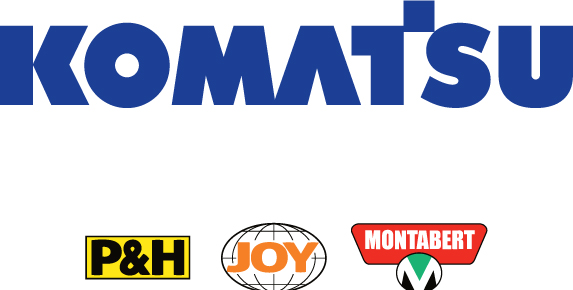Increasingly, mining companies are basing asset-procurement decisions on total cost of ownership instead of only purchase price. Life cycle cost (LCC) analysis is a method of estimating total cost of ownership (TCO) that measures the initial capital cost against the long-term expenses of owning and operating the asset. Any LCC analysis of heavy mining equipment such as a haul truck must include estimates of maintenance, downtime and component repair/rebuild costs.
Mine operators have reported LCC savings of 10-15%* after moving from manual haul trucks to Komatsu FrontRunner AHS trucks. Contributing factors include: increased visibility of component health, enabling longer maintenance intervals; elimination of human error, leading to reduced wear and tear and subsequently longer component life; and greater precision, which enables the trucks to run on designated paths that can be more easily maintained.
Komatsu customers have been pushing to reduce downtime associated with inspections and maintenance. Where inspections once had to be performed after every 12-hour shift, autonomous systems now make it possible to conduct inspections once every 48 hours. Some Komatsu partners have found they can conduct planned maintenance once every 750 hours, instead of 250 hours.
This is thanks to the level of visibility afforded by autonomous systems. In an entirely manual operation, the mine operator is reliant on drivers looking at gauges and reporting issues to their superiors. With autonomous, the system continuously monitors the health of major components, sending reports in real-time to the central control room. This enables the mine operator to increase asset utilization while continuing to ensure the health and productivity of the asset.
Removing human drivers from the cab also eliminates the risk of human error. Manual operators are capable of poor choices like driving over big rocks or deep ruts. Autonomous trucks do precisely as they are instructed, avoiding actions that cause unnecessary wear and tear. As a result of reduced wear and tear, Komatsu FrontRunner users have reported up to 40% increase in tire and brake life on average.
Of course, an AHS-equipped truck is no less susceptible to slipping or getting stuck than a manual truck of the same model. However, when faced with the same type of problem, autonomous systems undoubtedly make better decisions. Manual operators may be naturally inclined to attempt to pull out or correct themselves. In contrast, autonomous trucks are programmed to detect and avoid obstacles. Autonomous trucks also have an additional layer of protection: the central operator sitting in the control room. If a central controller sees a potential hazard, they have the power to send new instructions, such as ordering the fleet to reroute or slow down.
In addition to safety, autonomous systems always prioritize the health of the truck, something that can't necessarily be said for human drivers. For example, manual operators often don't drive at the correct speed downhill. This is such an issue that some companies have actually requested Komatsu install control mechanisms that force trucks to slow down even when there is a human operator inside - a possible gateway to adopting fully autonomous solutions.
AHS trucks, on the other hand, slow down to a suitable speed before reaching the crest of a hill, eliminating any possibility of over-speeding. To give another example, manual operators have been known to leave trays up when driving on haul roads, causing excessive wear on the hoist cylinder. Autonomous vehicles can be programmed to lower the tray immediately upon leaving the crushing or dump areas.
Another important advantage of autonomous solutions is their predictability. No two manual drivers are the same. While one operator may adhere to all the protocols, another may use the brakes excessively or not use the gears in the optimal manner. Differences in how people drive lead to differences in component wear and tear.
As a result, two trucks operating alongside each other may experience significantly different tire or brake life. By contrast, autonomous trucks operate consistently, helping technicians predict when components will fail and to schedule repairs and replacements accordingly.
Finally, because the GPS systems on autonomous haul trucks are so precise, they can be programmed to travel on the exact same path every time or - in places like the Arctic where extreme weather conditions such as spring breakup cause ruts in the road - a multipath trajectory with one-meter offsets. GPS precision affords mine operators the luxury of designing roads in a way that doesn't constantly push the trucks to their limits. For instance, the road may take a wider angle at turns, so as to prevent the trucks from cutting corners.
In manual operations, drivers continually vary their paths on the haul roads, requiring the entire width of the road to be graded. In autonomous operations, grader operators are required to maintain the road more often, but this is balanced out by the need to maintain a smaller volume of road. The net result is that roads are better maintained. This increases asset utilization and productivity while also causing less wear and tear - increasing component life and reducing total cost of ownership of the asset.
ABOUT THIS COMPANY
Komatsu
HEAD OFFICE:
- 4400 W. National Ave, Milwaukee, Winconsin 53214-3684, USA
- Phone: (414) 671-4400
- Web: mining.komatsu

























